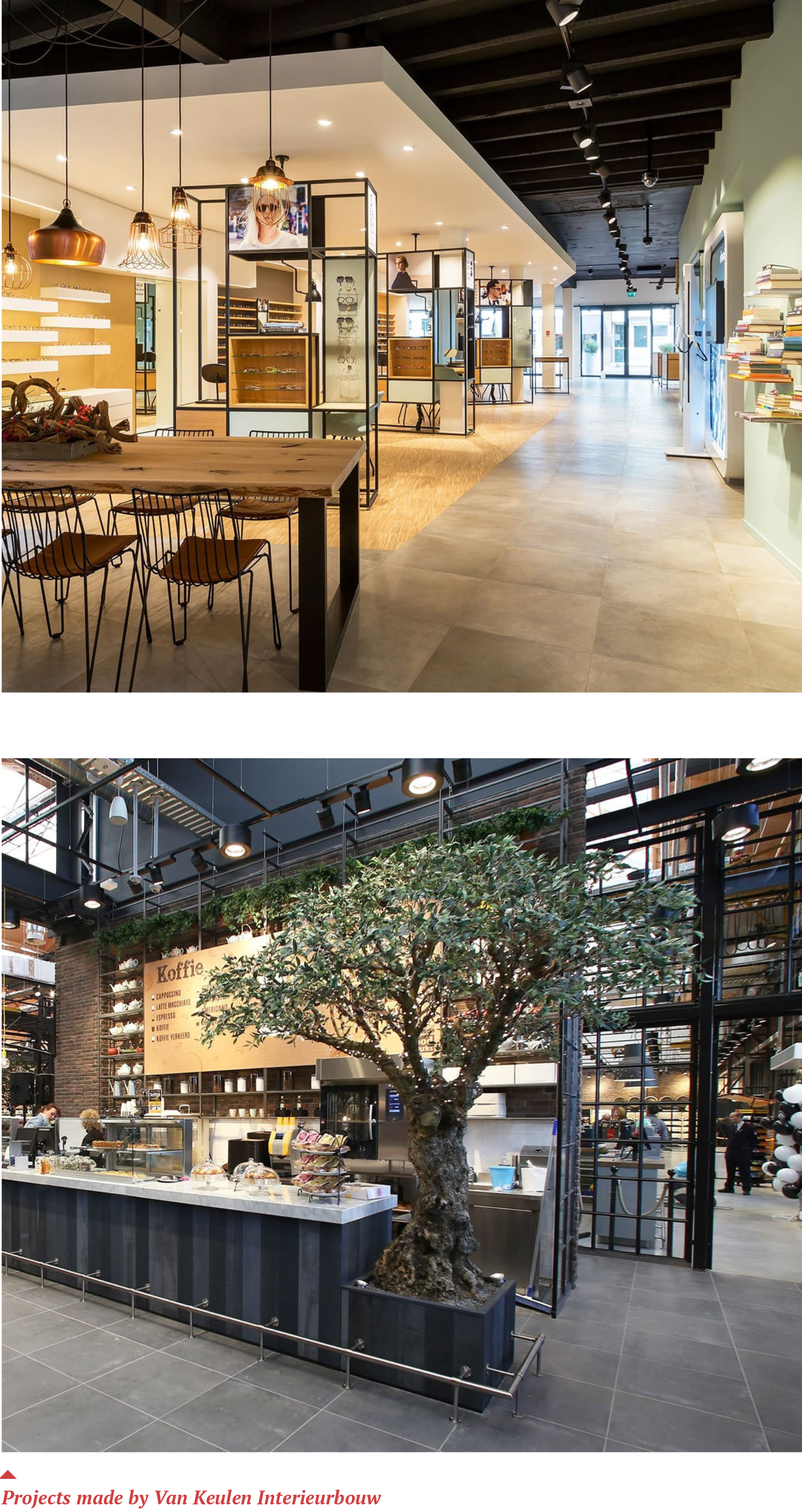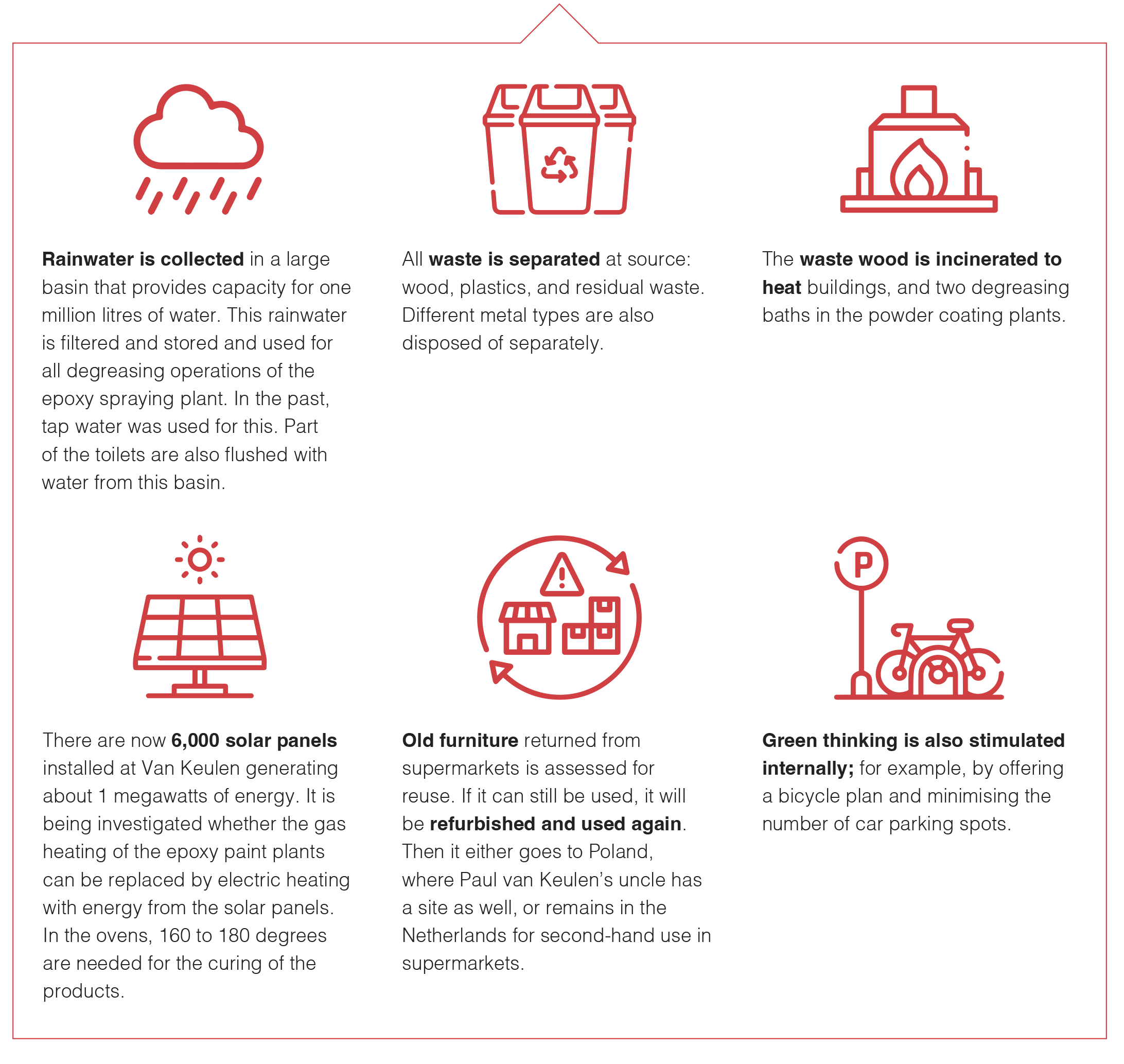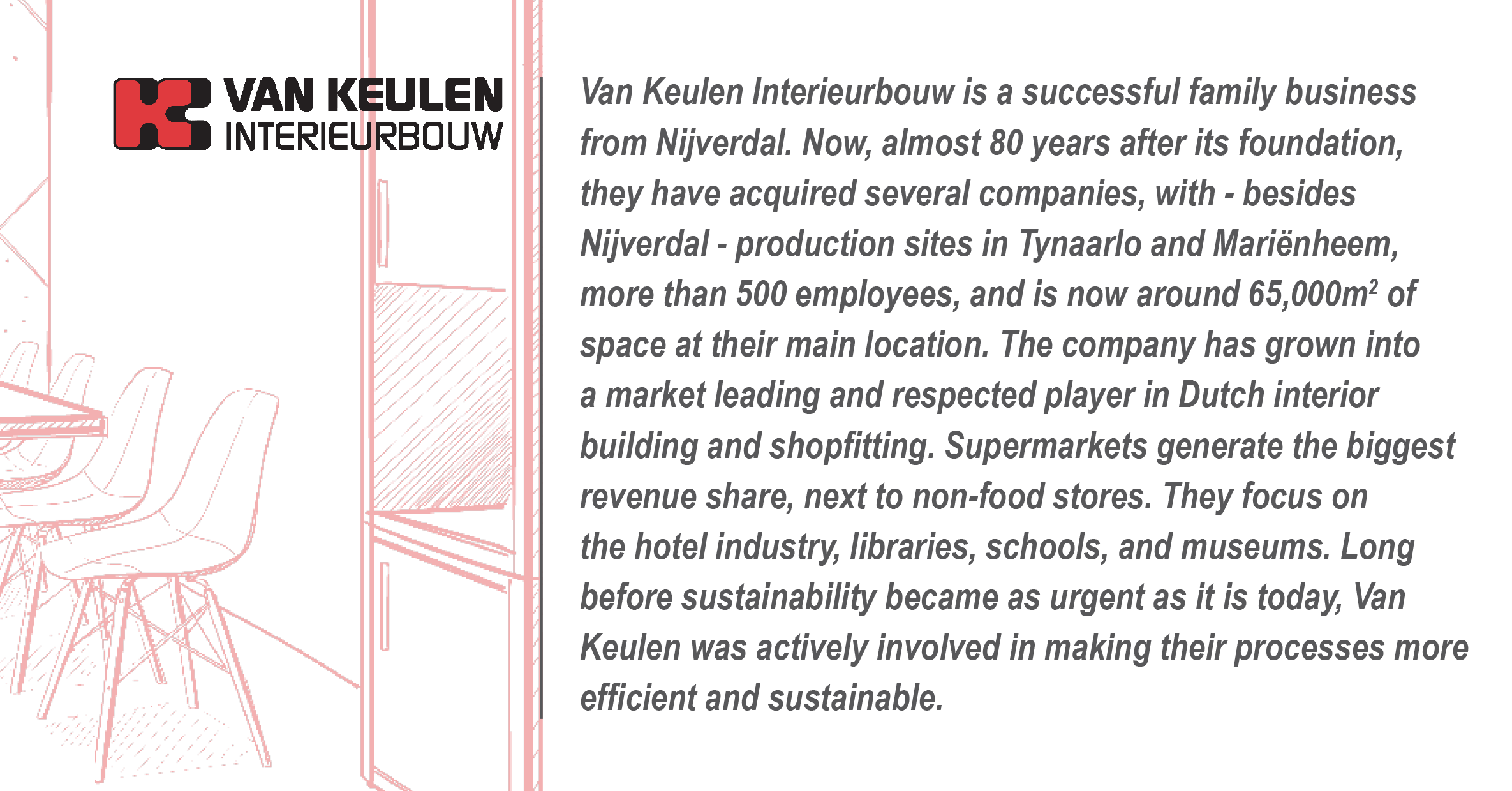GREEN THINKING AT VAN KEULEN
Paul van Keulen is managing director at Van Keulen Interieurbouw. The company was founded in 1944 by his grandfather, he starts by saying: “My grandfather started with hammer and axe handles, then went on to playpens, and from playpens moved on to grocery stores. When the self service concept for supermarkets came over from the United States, we got our first supermarket as a customer, which we stuck to and became expert in. Supermarkets have become and remained the largest customer area.” A number of strategic acquisitions enabled Van Keulen Interieurbouw to diversify to other market segments too, such as libraries, schools, and hotels. In short, Van Keulen Interieurbouw takes care of the complete furniture of these buildings between the ceiling and the floor. Roughly 60% of steel and 40% of wood are used for this, of which 5% of the latter group includes plastics.
Van Keulen has a strong philosophy that translates into a successful strategy: from payroll to assembly, everything is done in-house. All facets of the production take place in-house, only the raw materials are purchased. With this strategy, sustainability is very manageable, with no dependency on environmentally harmful production and polluting transport from non-EU countries. Moreover, this makes them more flexible: and they can quickly respond to changing or new demands in the market.

The process
The motto of Van Keulen Interieurbouw is “We make your wishes come true in detail”. The first step is product design, which they receive from their customer. Van Keulen then works out this design technically, looking at shapes, and which materials can best be used. Materials should be as lightweight as possible but meeting the strength requirements for the intended function.
This is the first step in the process in terms of sustainability. After all, next to using as little material as possible, transport emissions also decrease when moving lighter products. However, maintaining quality remains paramount. Van Keulen Interieurbouw does the production entirely in-house. After taking over a wire factory, they can now produce wire steel racks, in addition to steel and wooden constructions. Finally, transport, is also executed by themselves: with 40 delivery vehicles, the interior parts are delivered and assembled on site by Van Keulen mechanics.
Sustainability
Sustainability has been an important topic at Van Keulen Interieurbouw for more than 20 years: “We are constantly making our processes more efficient. More efficiency directly contributes to sustainability. Especially if you produce everything in-house and in the Netherlands, that goes hand in hand, making it easier to guarantee sustainable practices.”
The most important sustainability activities of Van Keulen Interieurbouw for a greener world: Furthermore, extra isolation of the buildings in Nijverdal is on the agenda and quite some action has been undertaken at the other locations. “We built the factory in Tynaarlo from scratch; the roof is full of solar panels and the building meets all sustainability requirements. As a result, energy consumption has dropped enormously. In addition, all CO2 laser cutting machines have been replaced by machines that work based on Fiber, reducing consumption per machine by two thirds. Four such machines have been replaced, achieving a huge reduction in energy consumption.” Finally, in nearly all buildings traditional lighting has been replaced by LED lights.

Future
Van Keulen’s future plans are mainly focused on further optimisation and sustainability of the processes. He mentions making more efficient use of the production resources as his main goal: “For example, by ensuring the lower skilled employees can continue to do the same processes in the future. This could for example be in collaboration with a robot or cobot, or with a low-tech solution: if, let’s say, due to the decreasing pool of new professionals the welding work is done less accurately, we can teach our people to sand better to solve this.”
They have also just bought a new high-tech panel bending machine for the Tynaarlo site. “An important question is how the geometry you have created is produced by the machine. There we are mainly looking at how that process can be optimised. Perhaps Machine Learning can play a part in this.”
Van Keulen is also working on an automation process for their 3D package software. “With IronCAD we design our products. The objective for the coming years is: “How do we get everything we have designed directly manufacturable?”
The wood processing industry lags far behind the metal industry in terms of these software integrations, for example between designing programmes and machines, says Van Keulen. To develop this, they will soon start a project with the FIP-AM@UT.
For the production, Van Keulen Interieurbouw usually receives the designs from their customer. However, when these drawings are imported into their own systems, features such as holes that need to be milled or drilled into the product, are no longer visible. These must be manually re applied in the design. The project with the FIPAM@UT aims to develop the software in such a way that this feature recognition is automated, to be able to better estimate production times and lead time.

